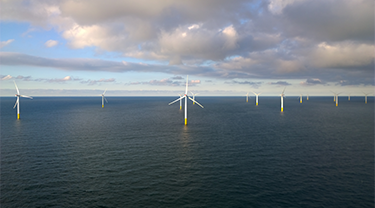It was a year of ups and downs for Canadian exporters that included history-making trade deals and politically driven trade wars. Here, we share some of the key highlights and look ahead to 2019.
1. CUSMA
The United States is Canada’s biggest trading partner, so there’s no question the negotiation of the Canada-United-States-Mexico Agreement was monumental in 2018. EDC Chief Economist Peter Hall, who travels the country each November meeting exporters and reporting on export trends, said he witnessed a tremendous amount of relief from exporters on that file. The world was watching this negotiation closely because Canada was “on the front lines of the end of globalization,” he says. “Now there’s much more of a sense that globalization is being strengthened, not demolished. There’s been a great sense of reassurance that we have a deal with our best customer.”
2. China-United States trade war
Hall says this is a “very big development with repercussions for globally integrated Canadian companies.” When you consider, there are tariffs being levied against half of what China sends America’s way, it’s clearly a big story. “The original threat was to move the tariff from 10% to 20% on Jan. 1, 2019. That’s a very serious move for the United States and China and it has lots of Canadians worried. In this case, the rhetoric was backed up by a very potent policy move.” Canadians with operations in China that ship to the United States, will be subject to those tariffs, which is why it affects Canadians.
You should also check out
Nearly 1,000 exporters told us what they’re expecting for 2019 in our Trade Confidence survey. Benefit from their insight and see if you agree. Register now for the webinar.
3. Election of a new Mexican president
Getting CUSMA passed before the election, and having it signed by outgoing President Enrique Peña Nieto, was a relief, given that Mexicans elected populist President Andrés Manuel López Obrador (who is known as AMLO) on July 1. He was sworn in one day after Peña Nieto signed the agreement. “Failure to sign that and throwing it into limbo would have seriously undermined the ability of the United States to get it through,” Hall says. “It was very important to make that date. Uncertainty was averted.” That said, the U.S. and Canada have significant business investments in Mexico and AMLO’s election creates doubt about how those investments will be regarded.
4. Steel and aluminum
The Trump administration slapped tariffs on aluminum and steel in the name of national security in late May 2018. “The United States wants to push Canada toward a managed trade relationship, whereas, we think there’s no place for tariffs to be applied between the United States and Canada on national security grounds,” says Mark Agnew, director of international affairs at the Canadian Chamber of Commerce. Canada applied retaliatory tariffs because it had to react in some fashion. That has an impact on Canadian businesses that are users of those U.S. products, Agnew said.
5. World Trade Organization (WTO)
Canada hosted a ministerial meeting to break some of the gridlock that’s currently in the WTO’s system, which U.S. President Donald Trump has repeatedly questioned. “It was a good first step,” Agnew says. “They’ve had the initial discussions and ideas floating around. But at the end of the day, it’s a political decision and people at 1600 Pennsylvania Avenue have to decide if they want to make it work.”
In 2019, here are five issues to keep on your trade radar.
1. Legislative process of CUSMA
As CUSMA works its way through the U.S. legislative process, prepare for moments of drama. With 41 out of 50 American states having a significant stake in the agreement in terms of jobs and consumer prices, Hall is confident it’ll pass, “but says it won’t be a cake walk.”
2. Brexit happens March 29
There’s debate going on as we write this, so it’s hard to say what will happen with the British Parliament and the European Union (EU) states, but the date for Britain’s exit from the EU is March 29, 2019. It’ll be interesting to watch as May fights to hold on to power, after delaying a vote on the agreement she’s struck with the EU because she knew it would fail. Governor of the Bank of England, Mark Carney, recently likened Brexit to driving over a cliff that will cost the UK 8% of GDP. “People are saying that’s alarmist,” Hall says. “But if you’re a parent and your child is about to go over the cliff, it’s realistic alarmism.”
3. Interest rates
We haven’t seen significant repercussions on interest rate increases in 2018, but they’re continuing to rise and as they do, nations that have extended themselves are being faced with a rising interest burden. “That will become more obvious as we march into 2019,” Hall says. “The seriousness of that is magnified when there are large exposures on the books of Western financial institutions.”
4. The exit of Angela Merkel
The German Chancellor is stepping down and Hall says “she’s been the glue that’s held the EU together and the EU is one of the key engines of the world economy.” That, he says, throws things into a bit of limbo. Will Germany become a fractious place? Will a strong voice for Europe emerge? Stay tuned.
5. CPTPP comes into force
The Comprehensive and Progressive Agreement for Trans-Pacific Partnership actually comes into force on Dec. 30, 2018, but the trading will really begin in 2019. Canadian companies set to harness it immediately will win some first-to-market advantages.






